If you are responsible for organizing an all-hands meeting, it can be a daunting task, as all-hands meetings are known to invite the following challenges:
- Communication overload
- Addressing diverse needs and interests
- Hierarchical barriers
- Lack of interactivity
But fret not. We have prepared this guide with 15 proven tips to a successful all-hands meeting. Whether it is a regular weekly meeting or an annual company event, these tips and strategies will ensure that your all-hands-on-deck meetings are productive, efficient, and fun to leave your entire workforce empowered! 🔋💪
What Is An All-Hands Meeting?
But first, what is an all-hands meeting? An all-hands meeting, also known as town hall, is a gathering where everyone in a company or organization, including executives, managers, individual employees, and support staff, come together to share and discuss company updates, goals, achievements, and challenges.
It serves as a vital platform for fostering unity, alignment, transparency, and communication within organizations. An all-hands meeting helps align individual and team efforts with company goals, enhance employee engagement, and strengthen the overall organizational culture by creating a sense of belonging and shared purpose among employees.
Why Run An All-Hands Meeting?
All-hands meetings can be used to share company-wide updates, foster team-building, or celebrate milestones. Before you begin strategising ways to make your meetings more engaging and worrying about their successes, it is crucial to understand the “whys” behind running all-hands meetings. Here are some of the benefits all-hands meetings can bring to your team:
- Improved Alignment and Communication: Create better alignment in the organization. When everyone hears the same message from the leadership team, they can understand what is expected of them and how they can better contribute.
- Transparency and Inclusion: Create an open dialogue between management and the entire workforce to build trust and connection.
- Engagement and Motivation: Boost employee morale by recognizing achievements, celebrating successes, and providing a space for individuals to contribute their ideas and perspectives.
- Increased Collaboration and Innovation: Facilitate networking opportunities, encourage teamwork, and break down silos within the organization.
- Organizational Culture: Shape and reinforce the organizational culture to create a shared sense of identity among employees.
15 Tips to Run a Successful All-Hands Meeting
#1 Set your Goal to Strategize for Success
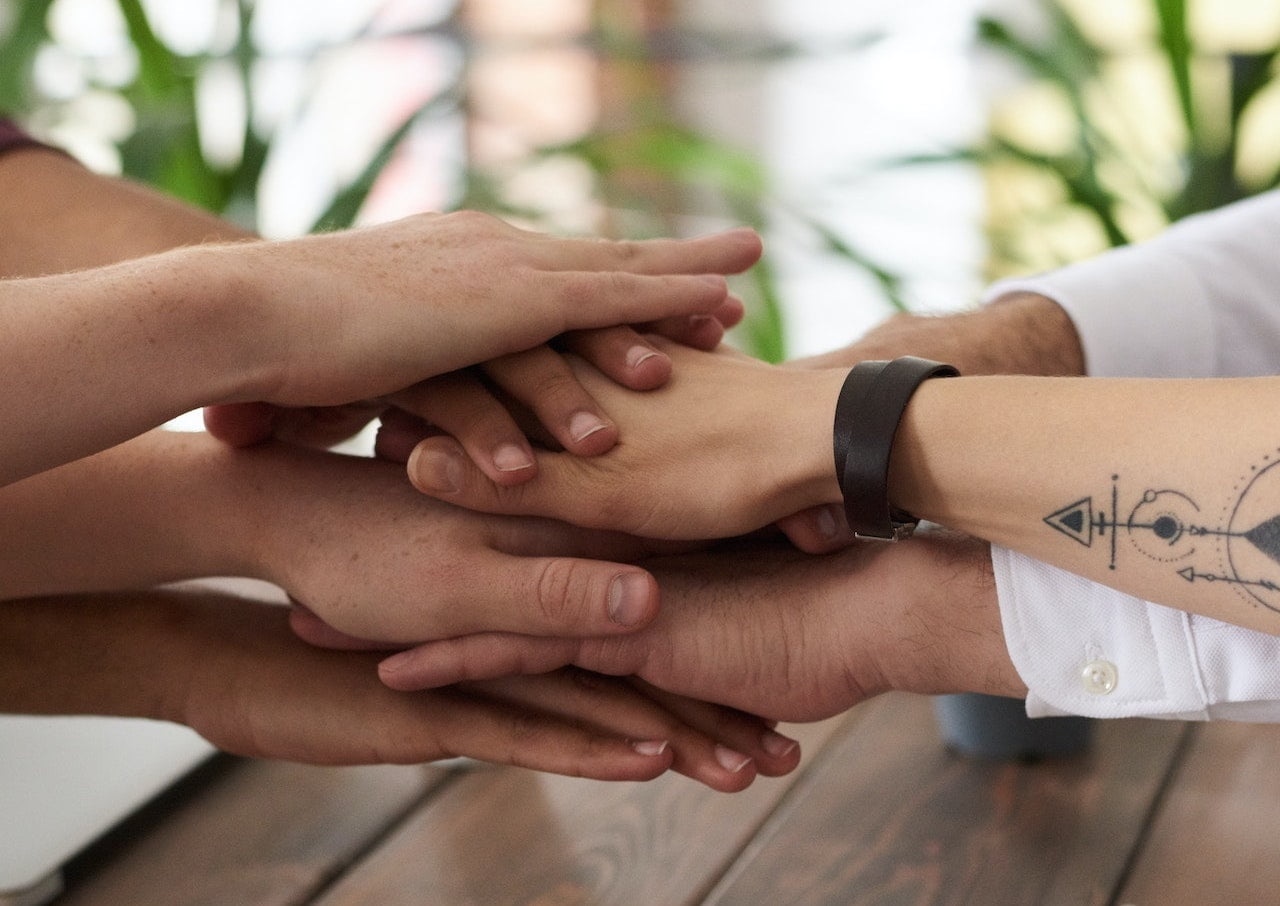
Before planning your meeting, it is crucial to identify the purpose of the meeting. Ask yourself, “Why do we need to hold an all-hands meeting?”, “What do we want to achieve from the meeting?”
Set a clear objective and structure the meeting accordingly. Define what you want to achieve and tailor the content to meet that goal. From there, you can go forward with determining the logistics, format, and content, along with assigning roles, preparing your agenda, and practicing.
#2 Unite Your Workforce Regardless of Location
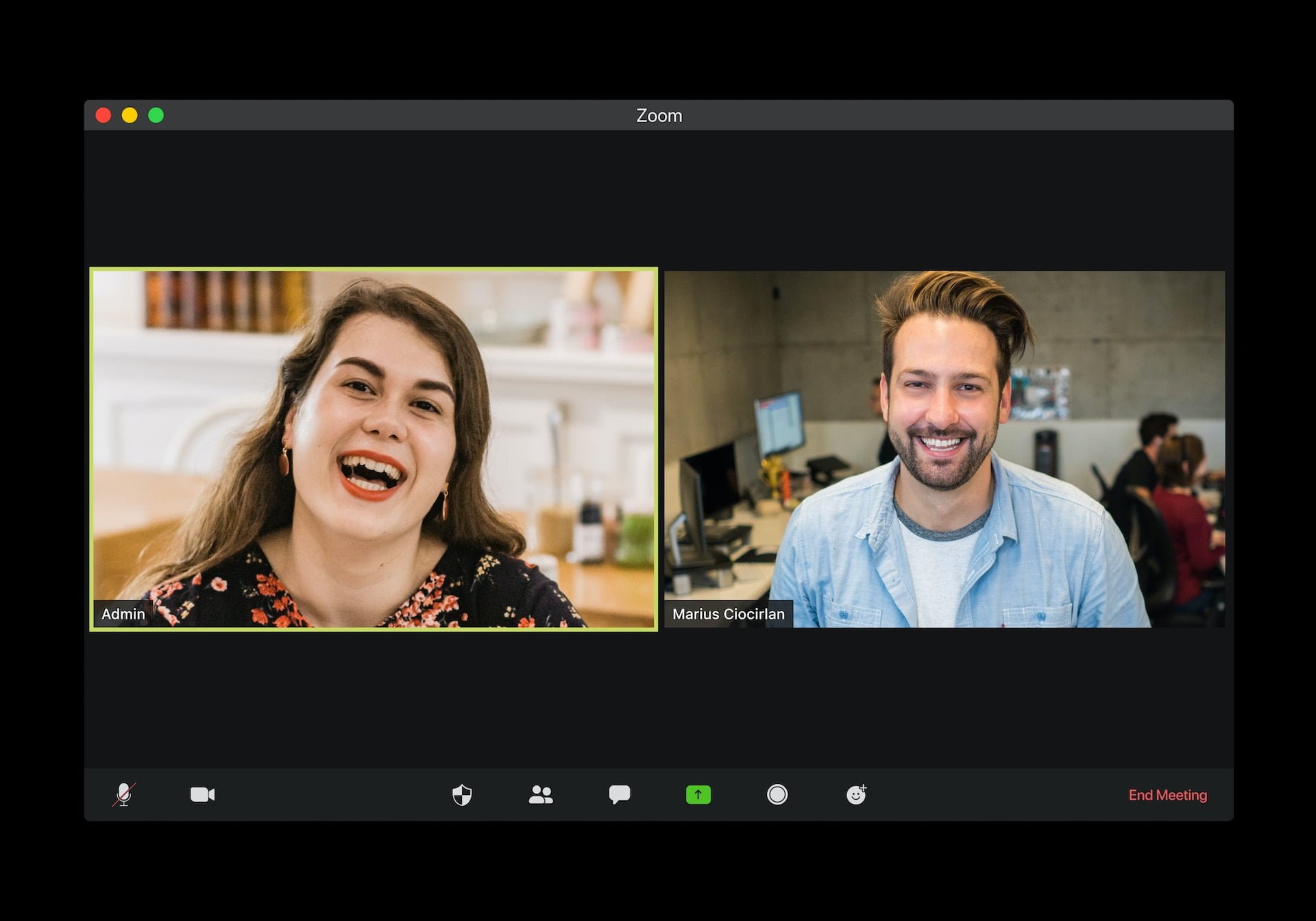
Determine whether an in-person, virtual, or hybrid format suits your company’s needs. The workforce is flexible now, so ensure all employees can participate easily, regardless of their location.
If you have multiple ways to attend the meeting, double check all the technology is ready to go, with backups in mind. Need help mastering Teams, Zoom or Google Meet? We’ve got you covered.
#3 Invite Multi-Department Speakers
Invite multiple speakers from different departments to your all-hands meeting to give employees a broader understanding of the company as a whole and how each department contributes to its success. Multiple speakers can provide a more comprehensive picture of ongoing projects, initiatives, and challenges across different areas of the organization. This helps to break down silos and encourages cross-departmental knowledge sharing, leading to increased efficiency and synergy.
Furthermore, hearing from various speakers adds variety and keeps the meeting engaging and dynamic. It prevents monotony and allows for different presentation styles and voices to capture the audience’s attention. By bringing together diverse perspectives and expertise, you can promote a culture of collaboration and unity, and encourage ownership & accountability as employees see their colleagues representing their respective departments and sharing their accomplishments and goals.
#4 Designate a Meeting Moderator
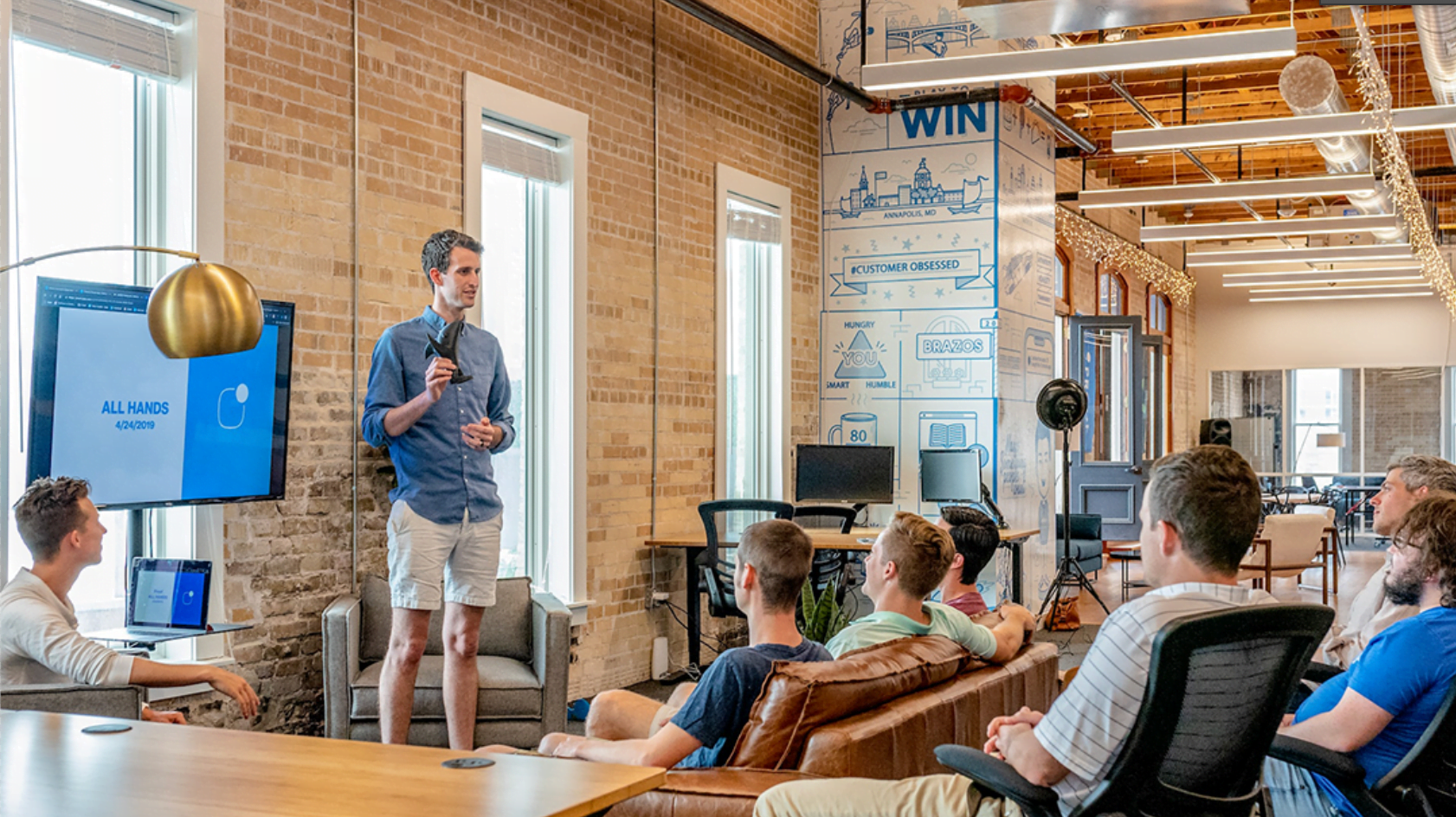
To ensure that your all-hands meeting is productive, focused, and the agenda is on track, is is wise to set a meeting moderator especially if there are multiple people and topics involved in the agenda. A moderator can manage the flow of the meeting, facilitate participation and ensure that everyone has the chance to speak. They can encourage inclusive, balanced contributions from attendees, while also preventing discussions from veering off into unrelated topics.
And if any conflicts or disagreements arise during the meeting, a neutral moderator can help to manage them. They can mediate discussions, ensure a respectful dialogue, and prevent any potential disruptions. Depending on your goals for the all-hands meeting, consider selecting a moderator without direct involvement in the topics being discussed.
#5 Craft and Communicate a Clear Agenda:
An engaging agenda should keep everyone’s attention, be easy to follow, and give your team a sense of ownership in the all-hands meeting.
Create a well-structured agenda that covers essential topics, department updates, interactive activities, and Q&A sessions. Include time expectations for each and try to stick to them as close as possible. Share the agenda in advance to allow attendees to prepare.
An example agenda could be:
- Start with an icebreaker Introduce the goals and objectives
- Share information and company updates with enticing visual aids
- Give team members a chance to shine with success stories and current work
- Open the dialogue and discussion for feedback and ideas
- End on a high note summarizing key takeaways and reminding everyone of the meeting’s purpose
Once your agenda is set, invite your team well in advance and communicate the agenda clearly. This way, you ensure a productive meeting and the team comes prepared and ready to participate with ideas questions, and feedback.
#6 Choose One Seamless Meeting Tool
Have a more productive and effective all-hands meeting by choosing one seamless meeting tool that consolidates the entire agenda and all slides from different speakers in one place. When all slides are unified in one place, following a cohesive template or theme, it allows for consistent branding and visual aesthetics throughout the entire meeting.
This not helps all the speakers transition seamlessly from one to the next, but also eliminates the need for participants to switch between multiple applications or platforms. No interruption or delay caused by switching between different software or files saves time and reduces potential confusion.
The ability for collaboration among speakers and meeting participants becomes more accessible bringing active engagement and participation from all attendees to the forefront. Participants can easily share ideas and discussions when using tools like ClassPoint that integrates audience response questions into your PowerPoint presentations.
#7 Ensure a Smooth Technological Experience
Take steps to create a smoother and more reliable meeting experience for everyone involved be reducing technical issues. By prioritizing a seamless technological experience, participants can fully engage in the meeting or webinar without disruptions or frustrations caused by technical difficulties.
Some potential issues to be informed on are audio/video conferencing tools, internet connectivity, screen sharing capabilities, or presentation software. If you have chosen one seamless meeting tool, you are already one step ahead. Reducing your presentation tools to only one tool, eliminates any potential issues or glitches, like issues arising from compatibility problems between different software or file formats.
#8 Enhance Clarity and Impact with Visual Aids
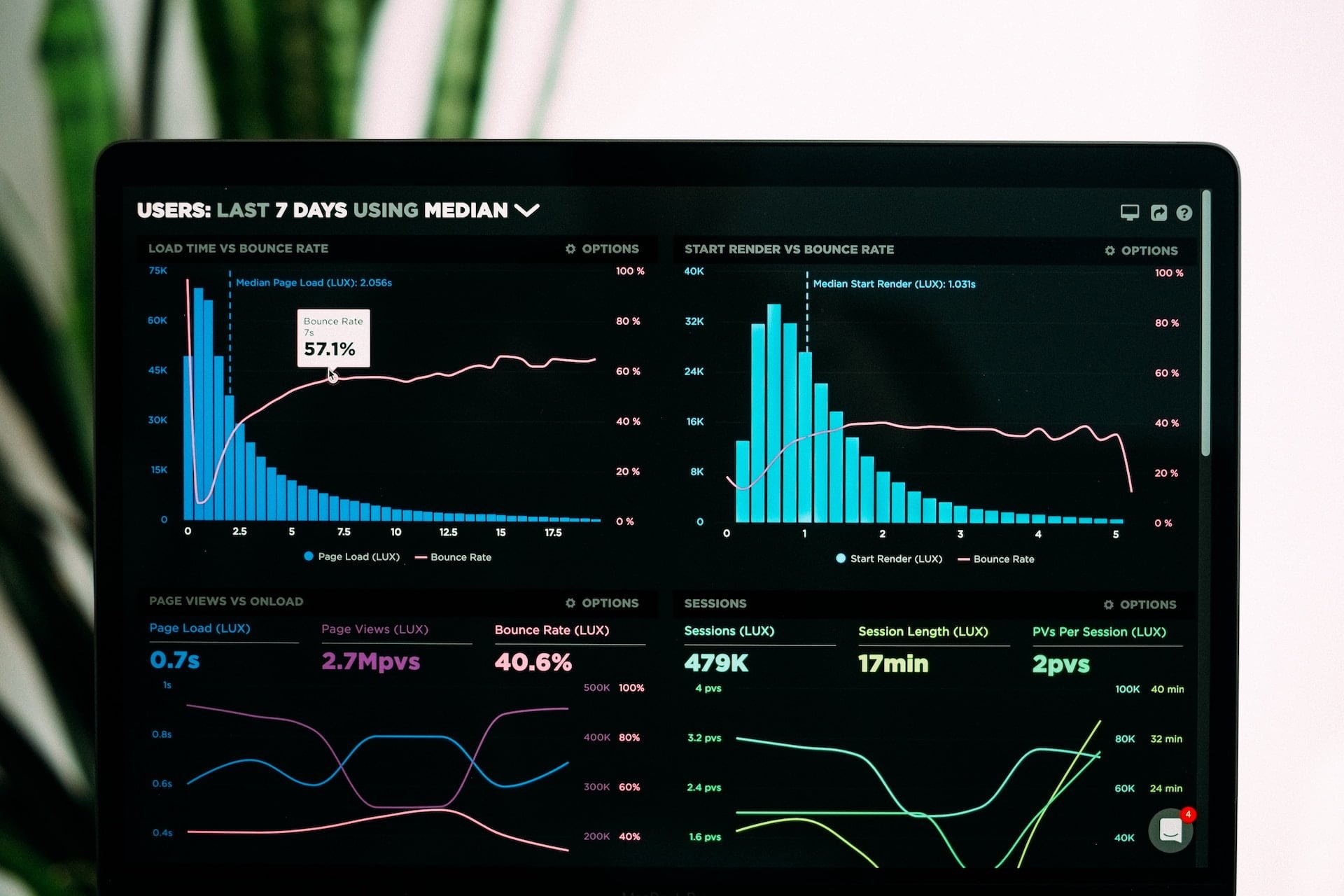
One of the biggest mistakes you can make when planning an all-hands meeting is being unclear or long-winded in your delivery. This can lead to disengaged team members, frustration, and ultimately, a less effective meeting.
Using strong visual aids, such as charts, graphs, diagrams, or infographics, can help convey complex information or data in a more accessible and understandable manner. Visual aids engage and hold attention and visually represent goals & progress ensuring that important messages are effectively conveyed and resonate with the entire audience. Learn more about the variety of ways you can enhance your presentations to make them more engaging.
#9 Empower Every Voice: Involve Everyone during the meeting
Encourage active participation by involving employees in discussions, interactive sessions, or polls. This will not only lead to better collaboration and communication within your team but will also help improve overall team morale and productivity.
To involve everyone, first, create opportunities for participation. Encourage employees to share their thoughts and ideas during a brainstorming session. To better hear everyone’s thoughts and ideas, use interactive activities. Below we have a list of questions you can ask before, during, and after your session to get everyone comfortable sharing.
Breakout sessions can also be an effective way to get everyone involved in a larger meeting. These smaller groups can help facilitate discussions and allow everyone to contribute their thoughts and ideas in a more intimate setting.
#10 Get active with friendly competitions
Incorporating elements of fun and enjoyment, especially a friendly, light-hearted competition, helps create a positive and relaxed atmosphere in what can typically be a boring, long, all-hands meeting. This can reduce stress and anxiety, and foster camaraderie and overall morale among team members.
According to the Harvard Business Review, “Competition increases physiological and psychological activation, which prepares body and mind for increased effort and enables higher performance.”
Try adding fun activities or games, like ClassPoint’s competition Quiz Mode, into your presentation. Or, add other elements of fun, like playing music, setting a theme for the meeting, providing snacks and refreshments, and adding some humor to the meeting!
What may be fun for some might not resonate with others so keep it flexible to create an enjoyable meeting for everyone.
#11 Run an Effective Q&A Session
During the all-hands meeting, allocate time for Q&A sessions to address employee concerns. Encourage transparency and provide thoughtful responses back to your employees. This may lead to tough questions and discussions which can be difficult to handle; however, it is an opportunity to answer them effectively and foster inclusivity & trust leading to employee buy-in.
If your meeting is tight for time, ask for questions ahead of time and prepare answers to address, and offer a shorter follow-up Q&A.
Some helpful reminders:
- Make it clear at the beginning of the meeting that tough questions and challenging discussions are welcome.
- As the facilitator, it is important to remain neutral and not take sides. Use active listening techniques, to ensure everyone is heard and understood.
- If the discussion becomes heated or emotions start to run high, it is okay to take a break.
- After the meeting, follow up with any individuals who had tough questions or concerns.
#12 Ask for Anonymous Feedback
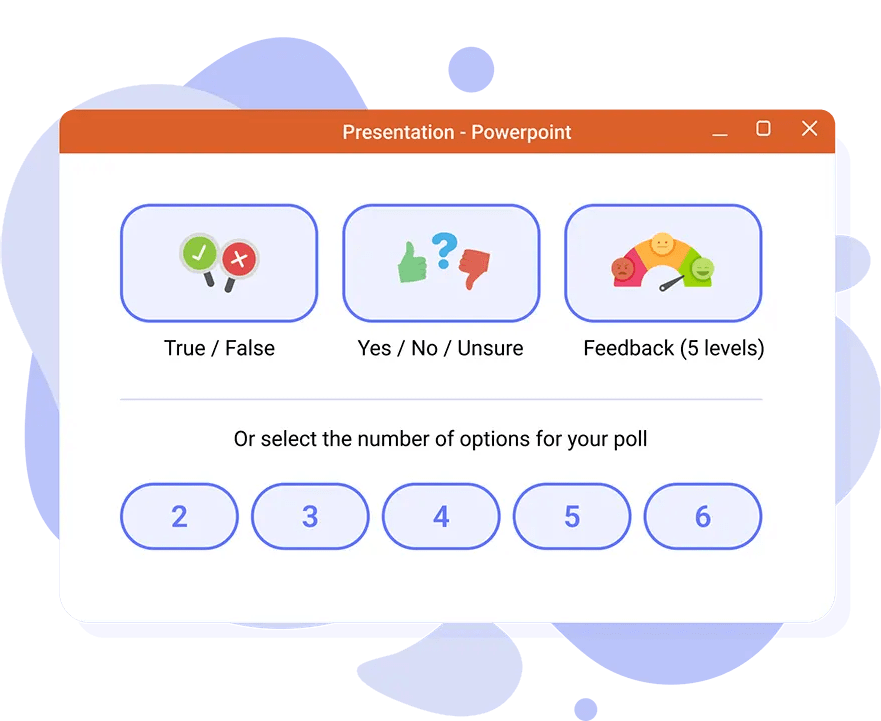
Real growth happens when we embrace tough feedback. Critical feedback and honest words are catalysts for organizational improvement and growth, so take the opportunity at an all-hands meeting to open the doors for feedback.
“The way you ask for criticism and react when you get it goes a long way toward building trust—or destroying it.”
Kim Scott, Radical Condor
Invite all team members to share unfiltered honesty with an anonymous feedback tool, like ClassPoint’s quick poll. You can choose to address some feedback live on the spot, or just give the team a safe and welcomed time and place for candid feedback.
#13 Celebrate Success and Motivate Progress

Recognize and celebrate individual and team achievements during the all-hands meeting to keep your team engaged and motivated. Highlighting the team’s accomplishments not only shows appreciation but also encourages them to keep pushing forward.
It is critical to take time to recognize the team, share positive feedback and results, and give credit where credit is due! You can even hand out certificates to show appreciation and motivate others to work harder and strive for success.
#14 Reiterate Key Points
Before wrapping up your meeting, state your key points or goals to the crowd. After what can be longer than a normal meeting, it reinforces the information shared, clarifies any confusion, and ensures a common understanding among employees.
By restating important details, goals, and decisions, you promote consistency and alignment within the organization. Additionally, it holds employees accountable, aids in the retention of organizational knowledge, communicates the next steps effectively, and accommodates absentees or latecomers.
Reiterating key points also allows for documentation and reference, providing a summary of the meeting’s outcomes for future discussions and decision-making, and can be shared with the team after the meeting or with anyone not there. Try using ClassPoint’s Share PDF feature to easily share your presentation without having to email it.
#15 End with Uplifting Inspiration
And lastly, leave participants feeling motivated, energized, and empowered by ending the meeting with uplifting inspiration.
To achieve this, you can share success stories, highlight individual or team achievements, and recognize the collective efforts of the organization. Or, you can even end with a motivational video, like a TedTalk or even a live speaker. Search the web during your presentation to pull up a video without leaving PowerPoint with ClassPoint’s embedded browser.
Closing the meeting with uplifting inspiration creates a lasting impression, fosters a sense of unity and determination, and motivates employees to continue striving for excellence. It’s an opportunity to leave participants feeling inspired, connected, and excited about their roles in the organization’s success, especially after you have just reiterated the key points.
Evaluate the Success of All-Hands Meetings and Plan for the Future
Once your all-hands meeting has ended, it is important to evaluate its success. You should analyze whether the meeting achieved its objectives and whether the employees found the content useful.
- Follow up: First, follow up after the meeting by summarizing key points, sharing meeting minutes, and collecting feedback. Feedback can be collected through surveys, feedback forms, or by analyzing attendance rates. This all helps to collect information on what worked and what didn’t. For example, you can ask employees what they thought of the content, the speakers, or the duration of the meeting.
- Analyse: Next, analyze the impact of the all-hands meeting. As yourself: “Did the information shared in the meeting lead to improved performance, productivity, or employee satisfaction?”
- Improve: Once you have evaluated the success of the all-hands meeting, you can use the feedback to improve future meetings. For example, if employees reported that the meeting was too long, consider shortening the duration for the next one. If they mentioned a particular speaker or topic they enjoyed, consider incorporating more of that in future meetings.
Questions to Ask in an All-Hands Meeting
Keep your team engaged throughout the whole meeting by asking questions and covering information they want to discuss.
How to know what they want to discuss? Ask them in a pre-meeting survey!
Some questions to ask your employees and yourself before your meeting:
- Are there any specific concerns or questions you would like addressed during the meeting?
- What are your thoughts on diversity and inclusion in our workplace, and how can we further support it?
- Can you share any examples of teamwork and collaboration that you believe deserve recognition and celebration?
- What are the key updates and developments that everyone should know about?
Now, to get your audience involved and gather discussion points during the meeting, you can ask more interactive questions. Start with ice-breakers to get everyone warmed up, then lead into questions like this:
- How can we improve communication and collaboration across departments?
- What was the most significant accomplishment or milestone for you or your team last quarter?
- In one sentence, describe a challenge you faced last quarter and how you overcame it.
- What support or resources would have been helpful to you or your team in achieving better results last quarter?
- Are there any perceived challenges with these new changes?
- Are there any areas or processes that you believe should be prioritized or improved in the next quarter?
Use a variety of question types to keep the audience interested and to present the data is the most fitting way. Use word clouds, short answers, multiple choice questions, or even image upload.
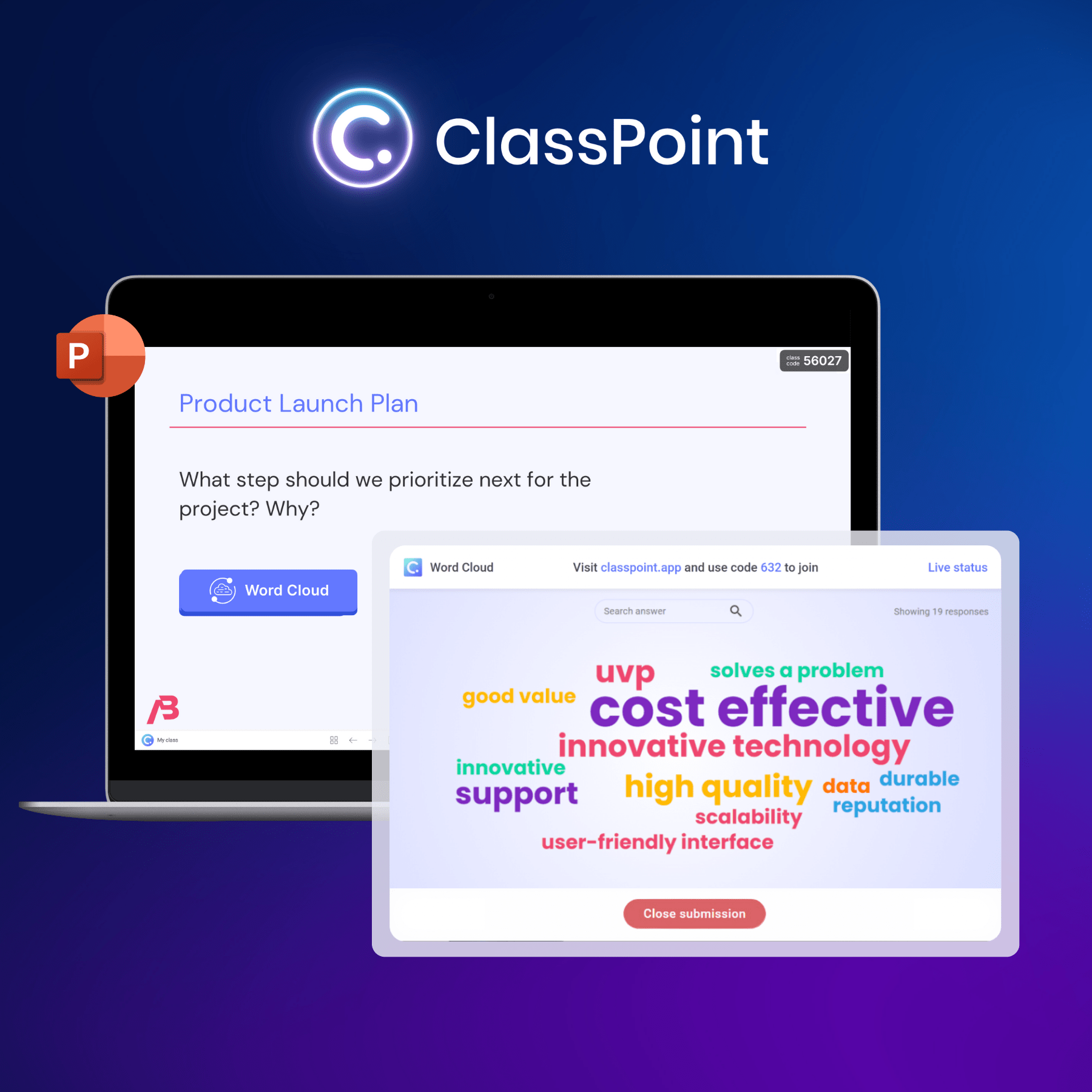
And lastly, after the meeting, gauge how it went by sending out a survey or having some final interactive questions before everyone leaves. Remember, these questions can be left anonymous to ensure honesty and comfort in those submitting responses.
- What are your key takeaways from the all-hands meeting?
- Did the meeting address your questions or concerns? If not, what additional information would you like to receive?
- Were the topics discussed relevant and valuable to you?
- Did you find the format of the meeting engaging and interactive?
- Were there any aspects of the meeting that could be improved? If so, what suggestions do you have?
- Do you have any ideas or suggestions for future all-hands meetings?
Key Takeaways
Moving forward, to run a successful, engaging all-hands meeting, remember:
- Running successful all-hands meetings requires strategic planning, so set clear objectives and structure the meeting around them.
- Encourage active employee engagement through participation, interactive activities, questions, and discussions.
- Utilize visual aids and technology to enhance communication and engagement.
- Foster transparency and trust through open discussions and actively listening and taking feedback to make changes in the future.